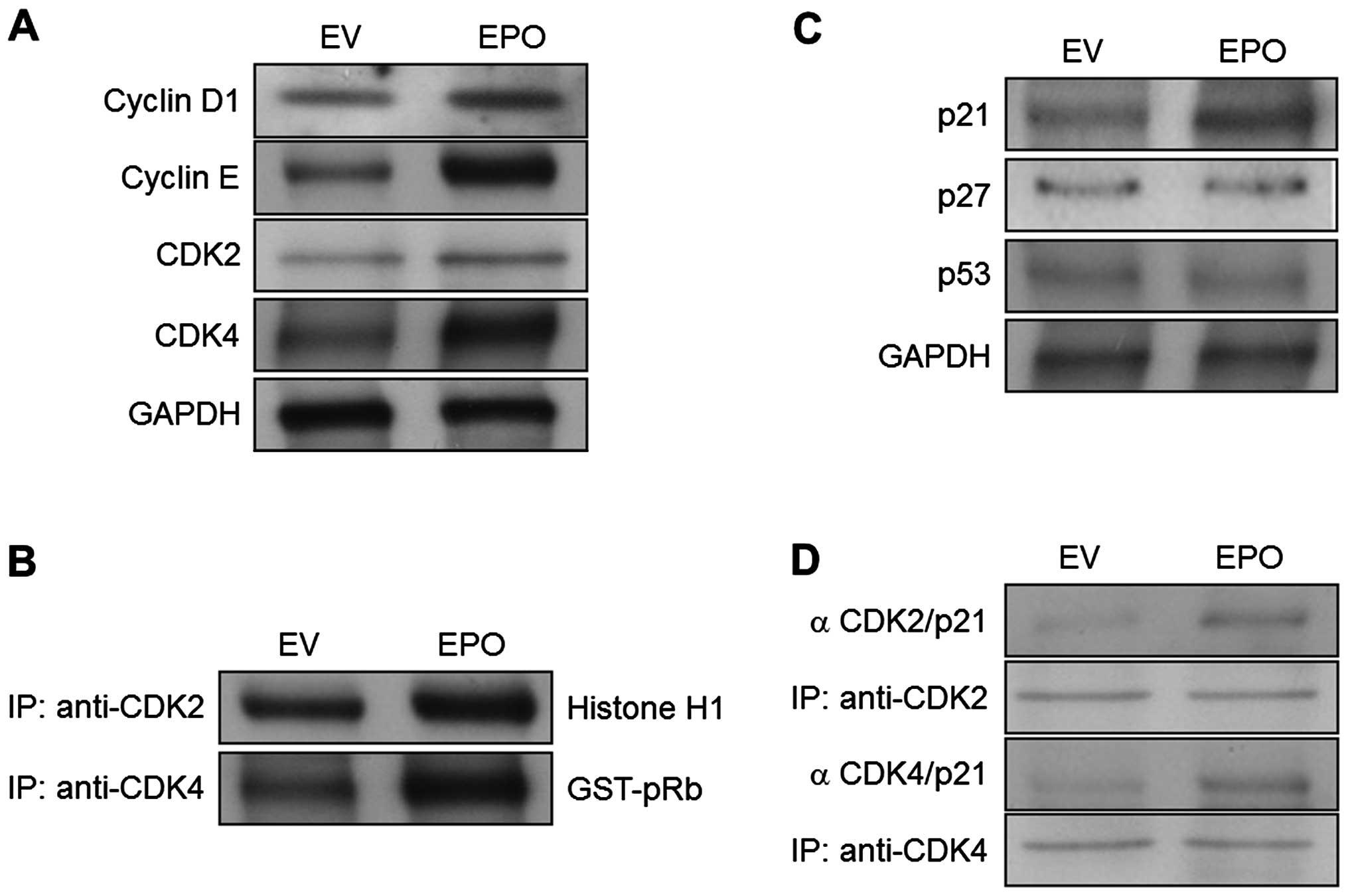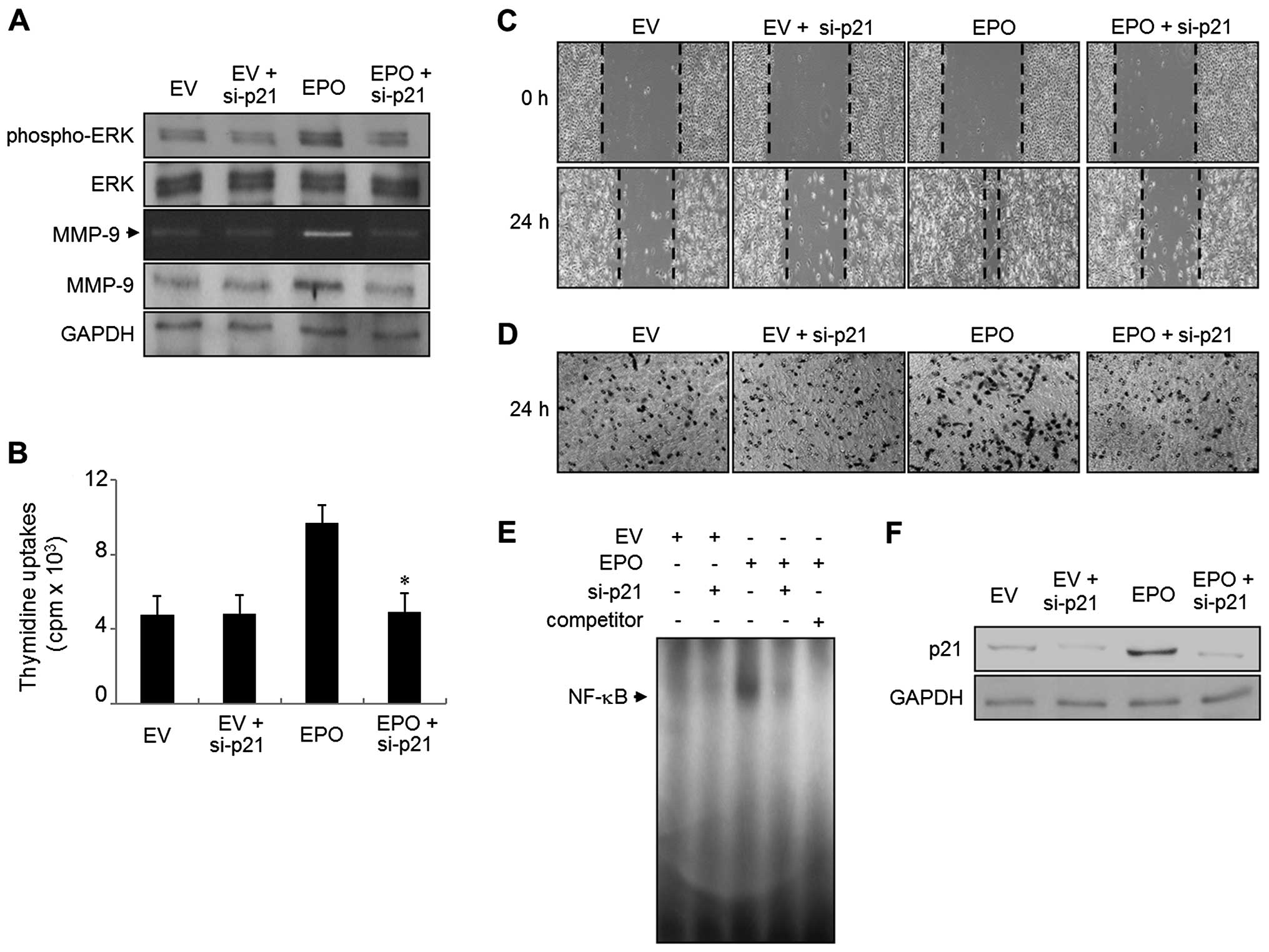|
1
|
Jemal A, Siegel R, Ward E, Murray E, Xu T
and Thun MJ: Cancer statistics, 2007. CA Cancer J Clin. 57:43–66.
2007. View Article : Google Scholar
|
|
2
|
Black PC and Dinney CP: Bladder cancer
angiogenesis and metastasis - translation from murine model to
clinical trial. Cancer Metastasis Rev. 26:623–634. 2007. View Article : Google Scholar : PubMed/NCBI
|
|
3
|
Zachos I, Konstantinopoulos PA, Tzortzis
V, Gravas S, Karatzas A, Karamouzis MV, Melekos M and Papavassiliou
AG: Systemic therapy of metastatic bladder cancer in the molecular
era: current status and future promise. Expert Opin Investig Drugs.
19:875–887. 2010. View Article : Google Scholar : PubMed/NCBI
|
|
4
|
Yun SJ, Moon SK and Kim WJ:
Investigational cell cycle inhibitors in clinical trials for
bladder cancer. Expert Opin Investig Drugs. 22:369–377. 2013.
View Article : Google Scholar : PubMed/NCBI
|
|
5
|
Zaravinos A, Lambrou GI, Volanis D,
Delakas D and Spandidos DA: Spotlight on differentially expressed
genes in urinary bladder cancer. PLoS One. 6:e182552011. View Article : Google Scholar : PubMed/NCBI
|
|
6
|
Davies B, Waxman J, Wasan H, Abel P,
Williams G, Krausz T, Neal D, Thomas D, Hanby A and Balkwill F:
Levels of matrix metalloproteases in bladder cancer correlate with
tumor grade and invasion. Cancer Res. 53:5365–5369. 1993.PubMed/NCBI
|
|
7
|
Lee SJ, Cho SC, Lee EJ, Kim S, Lee SB, Lim
JH, Choi YH, Kim WJ and Moon SK: Interleukin-20 promotes migration
of bladder cancer cells through extracellular signal-regulated
kinase (ERK)-mediated MMP-9 protein expression leading to nuclear
factor (NF-κB) activation by inducing the upregulation of p21(WAF1)
protein expression. J Biol Chem. 288:5539–5552. 2013.PubMed/NCBI
|
|
8
|
Sato H and Seiki M: Regulatory mechanism
of 92 kDa type IV collagenase gene expression which is associated
with invasiveness of tumor cells. Oncogene. 8:395–405.
1993.PubMed/NCBI
|
|
9
|
Moon SK, Cha BY and Kim CH: ERK1/2
mediates TNF-alpha-induced matrix metalloproteinase-9 expression in
human vascular smooth muscle cells via the regulation of NF-kappaB
and AP-1: involvement of the ras dependent pathway. J Cell Physiol.
198:417–427. 2004. View Article : Google Scholar : PubMed/NCBI
|
|
10
|
Sato H, Kita M and Seiki M: v-Src
activates the expression of 92-kDa type IV collagenase gene through
the AP-1 site and the GT box homologous to retinoblastoma control
elements. A mechanism regulating gene expression independent of
that by inflammatory cytokines. J Biol Chem. 268:23460–23468.
1993.PubMed/NCBI
|
|
11
|
Kumar B, Koul S, Petersen J, Khandrika L,
Hwa JS, Meacham RB, Wilson S and Koul HK: p38 mitogen-activated
protein kinase-driven MAPKAPK2 regulates invasion of bladder cancer
by modulation of MMP-2 and MMP-9 activity. Cancer Res. 70:832–841.
2010. View Article : Google Scholar : PubMed/NCBI
|
|
12
|
Krantz SB: Erythropoietin. Blood.
77:419–434. 1991.PubMed/NCBI
|
|
13
|
Ebert BL and Bunn HF: Regulation of the
erythropoietin gene. Blood. 94:1864–1877. 1999.PubMed/NCBI
|
|
14
|
Richmond TD, Chohan M and Barber DL:
Turning cells red: signal transduction mediated by erythropoietin.
Trends Cell Biol. 15:146–155. 2005. View Article : Google Scholar : PubMed/NCBI
|
|
15
|
Westenfelder C and Baranowski RL:
Erythropoietin stimulates proliferation of human renal carcinoma
cells. Kidney Int. 58:647–657. 2000. View Article : Google Scholar : PubMed/NCBI
|
|
16
|
Lester RD, Jo M, Campana WM and Gonias SL:
Erythropoietin promotes MCF-7 breast cancer cell migration by an
ERK/mitogen-activated protein kinase-dependent pathway and is
primarily responsible for the increase in migration observed in
hypoxia. J Biol Chem. 280:39273–39277. 2005. View Article : Google Scholar
|
|
17
|
Mohyeldin A, Lu H, Dalgard C, Lai SY,
Cohen N, Acs G and Verma A: Erythropoietin signaling promotes
invasiveness of human head and neck squamous cell carcinoma.
Neoplasia. 7:537–543. 2005. View Article : Google Scholar : PubMed/NCBI
|
|
18
|
Fu P, Jiang X and Arcasoy MO:
Constitutively active erythropoietin receptor expression in breast
cancer cells promotes cellular proliferation and migration through
a MAP-kinase dependent pathway. Biochem Biophys Res Commun.
379:696–701. 2009. View Article : Google Scholar
|
|
19
|
Paragh G, Kumar SM, Rakosy Z, Choi SC, Xu
X and Acs G: RNA interference-mediated inhibition of erythropoietin
receptor expression suppresses tumor growth and invasiveness in
A2780 human ovarian carcinoma cells. Am J Pathol. 174:1504–1514.
2009. View Article : Google Scholar
|
|
20
|
Belda-Iniesta C, Perona R, de Carpeno JC,
Cejas P, Casado E, Manguan-Garcia C, Ibanez de Caceres I,
Sanchez-Perez I, Andreu FB, Ferreira JA, Aguilera A, Dela PJ,
Perez-Sanchez E, Madero R, Feliu J, Sereno M and Gonzalez-Baron M:
Human recombinant erythropoietin does not promote cancer growth in
presence of functional receptors expressed in cancer cells. Cancer
Biol Ther. 6:1600–1605. 2007. View Article : Google Scholar
|
|
21
|
Liu WM, Powles T, Shamash J, Propper D,
Oliver T and Joel S: Effect of haemopoietic growth factors on
cancer cell lines and their role in chemosensitivity. Oncogene.
23:981–990. 2004. View Article : Google Scholar : PubMed/NCBI
|
|
22
|
LaMontagne KR, Butler J, Marshall DJ,
Tullai J, Gechtman Z, Hall C, Meshaw A and Farrell FX: Recombinant
epoetins do not stimulate tumor growth in erythropoietin
receptor-positive breast carcinoma models. Mol Cancer Ther.
5:347–355. 2006. View Article : Google Scholar : PubMed/NCBI
|
|
23
|
Lee SJ, Lee EJ, Kim SK, Jeong P, Cho YH,
Yun SJ, Kim S, Kim GY, Choi YH, Cha EJ, Kim WJ and Moon SK:
Identification of pro-inflammatory cytokines associated with muscle
invasive bladder cancer; the roles of IL-5, IL-20, and IL-28A. PLoS
One. 7:e402672012. View Article : Google Scholar : PubMed/NCBI
|
|
24
|
Moon SK, Kim HM, Lee YC and Kim CH:
Disialoganglioside (GD3) synthase gene expression suppresses
vascular smooth muscle cell responses via the inhibition of ERK1/2
phosphorylation, cell cycle progression, and matrix
metalloproteinase-9 expression. J Biol Chem. 279:33063–33070. 2004.
View Article : Google Scholar : PubMed/NCBI
|
|
25
|
Sherr CJ and Roberts JM: CDK inhibitors:
Positive and negative regulators of G1-phase progression. Genes
Dev. 13:1501–1512. 1999. View Article : Google Scholar : PubMed/NCBI
|
|
26
|
Besson A, Dowdy SF and Roberts JM: CDK
inhibitors: cell cycle regulators and beyond. Dev Cell. 14:159–169.
2008. View Article : Google Scholar : PubMed/NCBI
|
|
27
|
Fang J, Menon M, Kapelle W, Bogacheva O,
Bogachev O, Houde E, Browne S, Sathyanarayana P and Wojchowski DM:
EPO modulation of cell-cycle regulatory genes, and cell division,
in primary bone marrow erythroblasts. Blood. 110:2361–2370. 2007.
View Article : Google Scholar : PubMed/NCBI
|
|
28
|
Panzenböck B, Bartunek P, Mapara MY and
Zenke M: Growth and differentiation of human stem cell
factor/erythropoietin-dependent erythroid progenitor cells in
vitro. Blood. 92:3658–3668. 1998.PubMed/NCBI
|
|
29
|
Stein JP, Ginsberg DA, Grossfeld GD,
Chatterjee SJ, Esrig D, Dickinson MG, Groshen S, Taylor CR, Jones
PA, Skinner DG and Cote RJ: Effect of p21WAF1/CIP1 expression on
tumor progression in bladder cancer. J Natl Cancer Inst.
90:1072–1079. 1998. View Article : Google Scholar : PubMed/NCBI
|
|
30
|
Sharia SF, Kim J, Raptidis G, Ayala GE and
Lerner SP: Association of p53 and p21 expression with clinical
outcome in patients with carcinoma in situ of the urinary bladder.
Urology. 61:1140–1145. 2003. View Article : Google Scholar : PubMed/NCBI
|
|
31
|
Cordon-Cardo C: Mutations of cell cycle
regulators. Biological and clinical implications for human
neoplasia. Am J Pathol. 147:545–560. 1995.PubMed/NCBI
|














